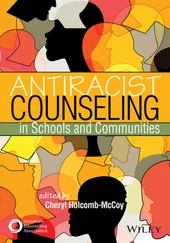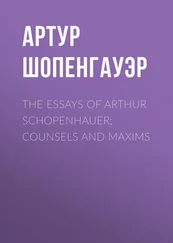Counseling and Psychotherapy
Здесь есть возможность читать онлайн «Counseling and Psychotherapy» — ознакомительный отрывок электронной книги совершенно бесплатно, а после прочтения отрывка купить полную версию. В некоторых случаях можно слушать аудио, скачать через торрент в формате fb2 и присутствует краткое содержание. Жанр: unrecognised, на английском языке. Описание произведения, (предисловие) а так же отзывы посетителей доступны на портале библиотеки ЛибКат.
- Название:Counseling and Psychotherapy
- Автор:
- Жанр:
- Год:неизвестен
- ISBN:нет данных
- Рейтинг книги:4 / 5. Голосов: 1
-
Избранное:Добавить в избранное
- Отзывы:
-
Ваша оценка:
- 80
- 1
- 2
- 3
- 4
- 5
Counseling and Psychotherapy: краткое содержание, описание и аннотация
Предлагаем к чтению аннотацию, описание, краткое содержание или предисловие (зависит от того, что написал сам автор книги «Counseling and Psychotherapy»). Если вы не нашли необходимую информацию о книге — напишите в комментариях, мы постараемся отыскать её.
Counseling and Psychotherapy — читать онлайн ознакомительный отрывок
Ниже представлен текст книги, разбитый по страницам. Система сохранения места последней прочитанной страницы, позволяет с удобством читать онлайн бесплатно книгу «Counseling and Psychotherapy», без необходимости каждый раз заново искать на чём Вы остановились. Поставьте закладку, и сможете в любой момент перейти на страницу, на которой закончили чтение.
Интервал:
Закладка:
THE CASE OF CLARITA: A BRIEF PSYCHODYNAMIC APPROACH
Goal 1: Developing Insight
Clarita arrives for her appointment 15 minutes early and appears motivated to reduce her depressive symptoms. The counselor may assume her eagerness is a consequence of anxiety resulting from a conflict between her id (or her basic drives) and her superego (the moral and ethically responsible component of her personality), evolving from past attachment-based experiences. The counselor helps Clarita set the goal of raising her awareness of her unconscious processes into consciousness and recognizing how her symptoms are a manifestation of painful life experiences and to learn new coping skills.
Goal 2: Expansion of Choice
Clarita expresses strong concern about her dreams, which represent the parts of herself that she is struggling to repress, or her id impulses and desires intruding on her carefully articulated reality. This aspect of her dream also indicates the rapidity of her unconscious struggle, which indicates a strong desire to merge her unconscious with her conscious. As she runs from the figures in her dreams, she is faced with boxes and crates with arrows pointing in all directions. This would indicate options and opportunities with multiple choices, but the contents of the containers remain hidden. The counselor uses interpretation and metaphors to help Clarita interpret the content of her dreams, exploring the symbols in the dreams and engaging her in connecting those symbols to themes in her life. For example, the counselor may illustrate how the shadowy figures represent the repressed, unconscious drives that Clarita is feeling increased pressure to acknowledge and confront, and then address the boxes and arrows as symbolic of a needed change in her life. Clarita and her counselor will likely meet weekly for approximately 12 sessions until both she and the counselor are satisfied that her symptoms have reduced and her coping skills are not reliant on defenses against external circumstances or past disrupted development and attachment.
Goal 3: Liberation From the Past
Although Clarita is aware of her depressive symptoms and is able to articulate her history and the current circumstances that are contributing to her symptoms, she is mostly unaware of the primary origin of her unconscious conflicts and how her early life has shaped her adult experiences and contributed to her current presentation. Additionally, she is experiencing an elevated level of guilt, indicating the strong presence of the ego (or the mediator between the id and superego). The counselor, practicing from an interpersonal psychodynamic perspective, assumes that Clarita is experiencing unconscious psychological conflicts between her personal need to gain autonomy and her need to remain loyal to her cultural traditions and family expectations.
Goal 4: Improvement of Interpersonal Relationships
Clarita mentions that she has considered suicide. The counselor associates this death instinct with her depressive symptoms and explores her trauma reactions to family separation and climate instability leading to cultural displacement. The counselor understands that the energy created by the life instincts is known as the libido and is exemplified in love, cooperation, and other prosocial actions, and thus emphasizes Clarita’s resilience through applied coping skills, which may now be more healthfully adapted to her current circumstances. As Clarita shares her history of negative relationship experiences, the counselor helps her make meaning of these experiences and articulates her need for unconditional love that is currently unmet. The counselor also explores the implications and consequences of Clarita’s psychosexual development and elucidates how any unaccomplished tasks at these levels have greatly contributed to her relationship issues and the manifestation of her anxious and depressive symptoms. For example, because Clarita was immersed in family responsibilities during her adolescence, she was unable to engage in her own self-development. Consequently, she is now struggling to maintain a healthy balance between all aspects of her life. The counselor will help her recognize how the manifestation of maladaptive behaviors and symptoms indicates a psychic struggle that she must fully explore in terms of mental and personality processes.
Goal 5: Corrective Emotional Experience
Clarita is using strong defense mechanisms, including repression of her unconscious conflicts creating her symptoms, and compensation by immersing herself in her work. The counselor utilizes a narrative technique to encourage Clarita to identify and articulate her own unconscious processes and reactive patterns as they become evident to her through this talking exercise.
REFERENCES
1 American Psychiatric Association. (2013). Diagnostic and statistical manual of mental disorders (5th ed.). https://doi.org/10.1176/appi.books.9780890425596
2 American Psychological Association. (2017). Psychoanalysis vs. psychodynamic therapy. https://www.apa.org/monitor/2017/12/psychoanalysis-psychodynamic
3 Barry, V. (2014). Research on the relation of psychoanalysis and neuroscience: Clinical meaning and empirical science. Journal of the American Psychoanalytic Association, 62(6), 1087–1096. https://doi.org/10.1177/0003065114559944
4 Berlin, H. A. (2011). The neural basis of the dynamic unconscious. Neuropsycho-analysis, 13(1), 5–31. https://doi.org/10.1080/15294145.2011.10773654
5 Berne, E. (1961). Transactional analysis in psychotherapy. Grove Press.
6 Bond, M. (2006). Psychodynamic psychotherapy in the treatment of mood disorders. Current Opinion in Psychiatry, 19(1), 40–43. https://doi.org/10.1097/01.yco.0000191499.69281.17
7 Bowlby, J. (1969). Attachment and loss: Vol. 1. Attachment. Hogarth.
8 Bush, M., & Meehan, W. (2011). Should supportive measures and relational variables be considered a part of psychoanalytic technique? Some empirical considerations. International Journal of Psychoanalysis, 92(2), 377–399. https://doi.org/10.1111/j.1745-8315.2011.00403.x
9 Cabaniss, D. L., Cherry, S., Douglas, C. J., & Schwartz, A. (2011). Psychodynamic psychotherapy: A clinical manual. Wiley-Blackwell.
10 Corey, G. (2021). Theory and practice of counseling and psychotherapy (10th ed., enhanced). Cengage.
11 Diamond, D., & Meehan, K. B. (2013). Attachment and object relations in patients with narcissistic personality disorder: Implications for therapeutic process and outcome. Journal of Clinical Psychology, 69(11), 1148–1159. https://doi.org/10.1002/jclp.22042
12 Diena, S. (2014). Workshop on dream interpretation. Romanian Journal of Psychoanalysis, 7(1), 67–78.
13 Eremie, M. D., & Ubulom, W. J. (2016). Review of psychoanalytic approach to counselling. International Journal of Innovative Psychology & Social Development, 4(2), 22–25. https://seahipaj.org/journals-ci/june-2015/june-2016/IJIPSD/full/IJIPSD-J-4-2016.pdf
14 Freud, S. (1955). Beyond the pleasure principle. In J. Strachey (Ed. & Trans.), The standard edition of the complete psychological works of Sigmund Freud (1920–1922): Vol. XVIII. Beyond the pleasure principle, group psychology and other works (pp. 1–64). Hogarth Press. (Original work published 1920)
15 Fulmer, R. (2018). The evolution of the psychodynamic approach and system. International Journal of Psychological Studies, 10(3), 1–6. https://doi.org/10.5539/ijps.v10n3p1
16 Gay, P. (2006). Freud: A life for our time. Norton.
17 Georgescu, M. (2011). The duality between life and death instincts in Freud. Contemporary Readings in Law and Social Justice, 3(1), 134–139. https://doi.org/10.1016/j.ecolecon.2010.11.021
Читать дальшеИнтервал:
Закладка:
Похожие книги на «Counseling and Psychotherapy»
Представляем Вашему вниманию похожие книги на «Counseling and Psychotherapy» списком для выбора. Мы отобрали схожую по названию и смыслу литературу в надежде предоставить читателям больше вариантов отыскать новые, интересные, ещё непрочитанные произведения.
Обсуждение, отзывы о книге «Counseling and Psychotherapy» и просто собственные мнения читателей. Оставьте ваши комментарии, напишите, что Вы думаете о произведении, его смысле или главных героях. Укажите что конкретно понравилось, а что нет, и почему Вы так считаете.












